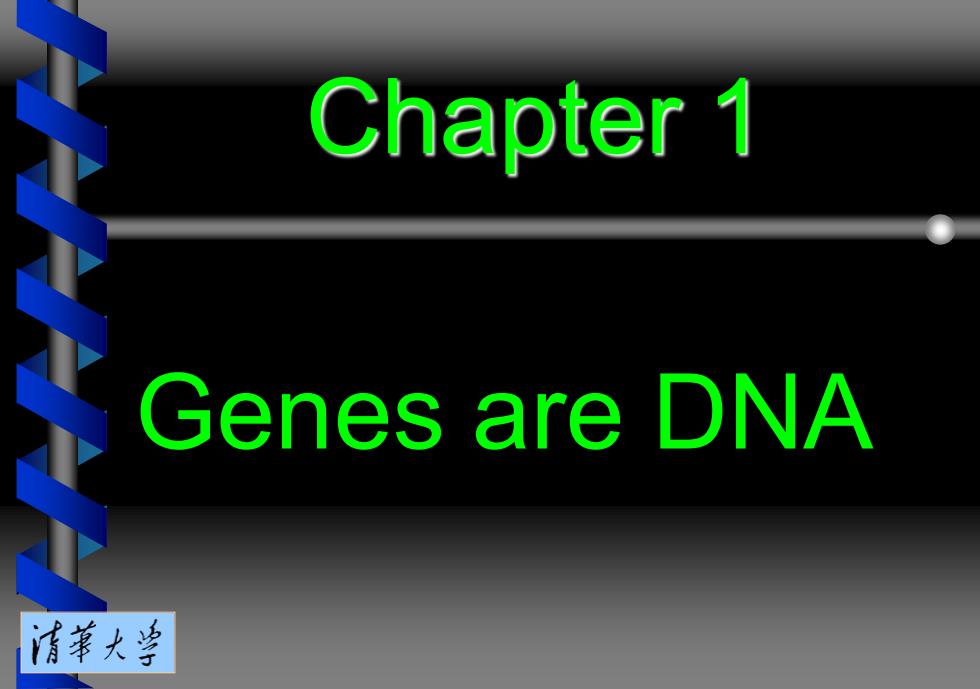
Chapter 1 Genes are DNA 清革大当
Chapter 1 Genes are DNA
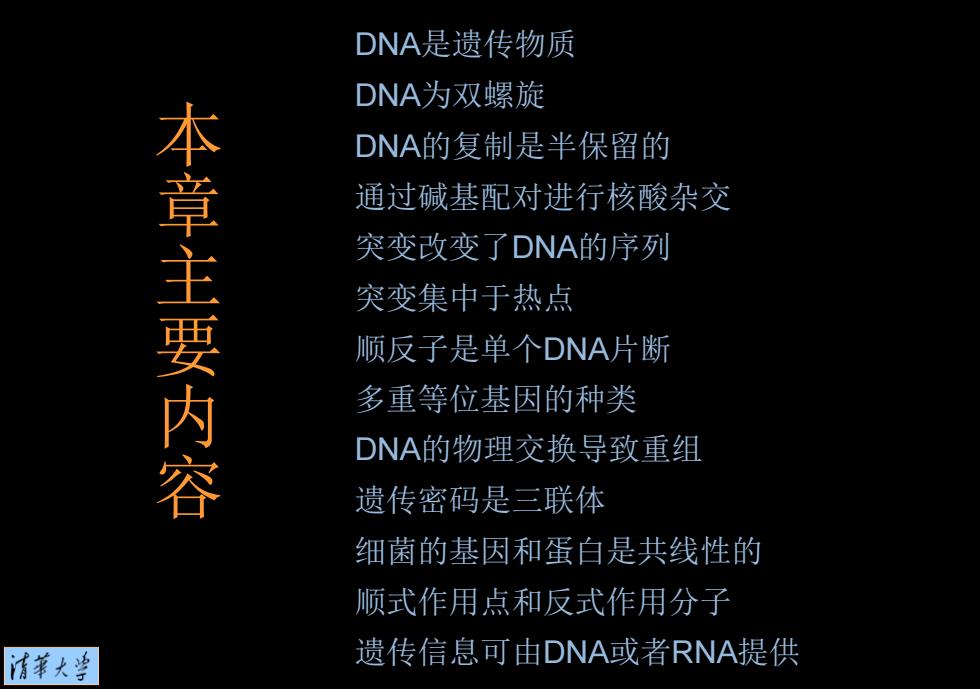
DNA是遗传物质 DNA为双螺旋 DNA的复制是半保留的 本章主要内容 通过碱基配对进行核酸杂交 突变改变了DNA的序列 突变集中于热点 顺反子是单个DNA片断 多重等位基因的种类 DNA的物理交换导致重组 遗传密码是三联体 细菌的基因和蛋白是共线性的 顺式作用点和反式作用分子 清苇大当 遗传信息可由DNA或者RNA提供
DNA是遗传物质 DNA为双螺旋 DNA的复制是半保留的 通过碱基配对进行核酸杂交 突变改变了DNA的序列 突变集中于热点 顺反子是单个DNA片断 多重等位基因的种类 DNA的物理交换导致重组 遗传密码是三联体 细菌的基因和蛋白是共线性的 顺式作用点和反式作用分子 遗传信息可由DNA或者RNA提供 本章主要内容
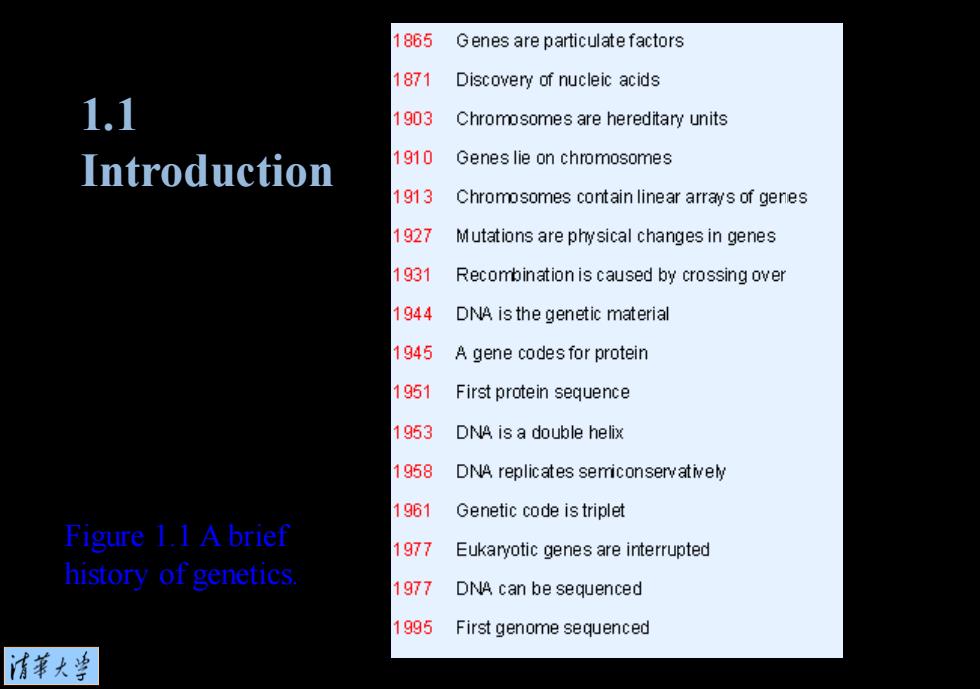
1865 Genes are particulate factors 1871 Discovery of nucleic acids 1.1 1903 Chromosomes are hereditary units Introduction 1910 Genes lie on chromosomes 1913 Chromosomes contain linear array's of genes 1927 Mutations are physical changes in genes 1931 Recombination is caused by crossing over 1944 DNA is the genetic material 1945 A gene codes for protein 1951 First protein sequence 1953 DNA is a double helix 1968 DNA replicates semiconservatively 1961 Genetic code is triplet Figure 1.1 A brief 1977 Eukaryotic genes are interrupted history of genetics. 1977 DNA can be sequenced 1995 First genome sequenced 清菜大当
Figure 1.1 A brief history of genetics. 1.1 Introduction
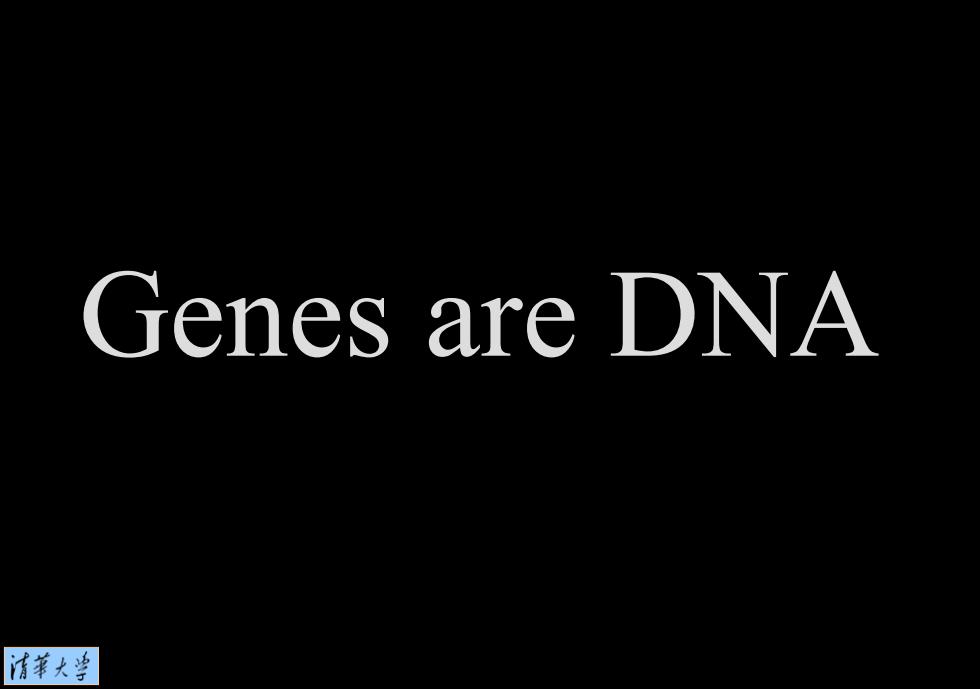
Genes are DNA 清苇大当
Genes are DNA
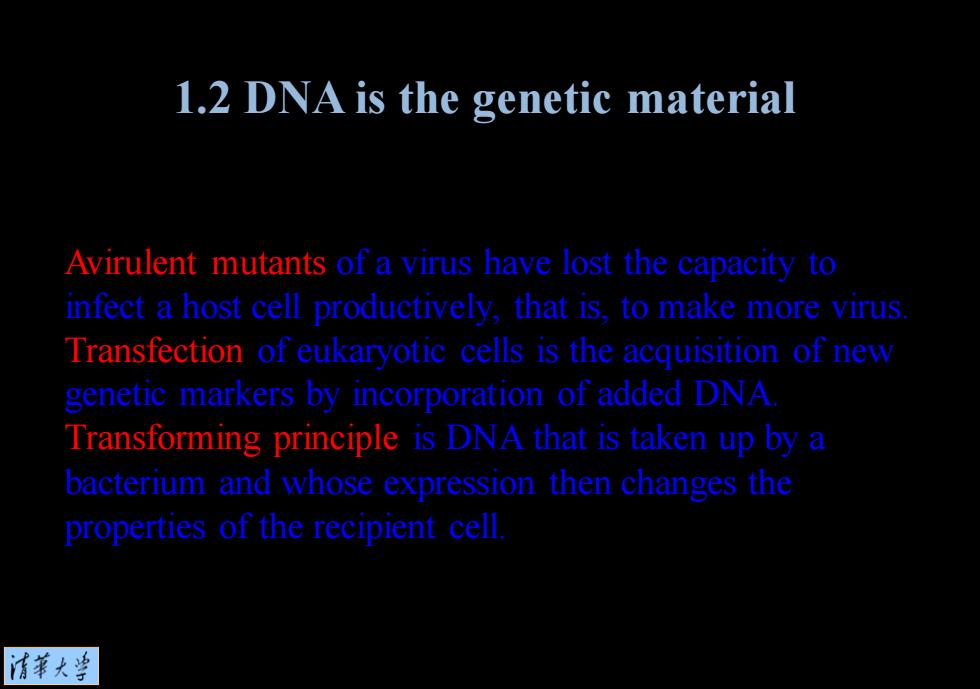
1.2 DNA is the genetic material Avirulent mutants of a virus have lost the capacity to infect a host cell productively,that is,to make more virus Transfection of eukaryotic cells is the acquisition of new genetic markers by incorporation of added DNA. Transforming principle is DNA that is taken up by a bacterium and whose expression then changes the properties of the recipient cell 情菜大兰
Avirulent mutants of a virus have lost the capacity to infect a host cell productively, that is, to make more virus. Transfection of eukaryotic cells is the acquisition of new genetic markers by incorporation of added DNA. Transforming principle is DNA that is taken up by a bacterium and whose expression then changes the properties of the recipient cell. 1.2 DNA is the genetic material